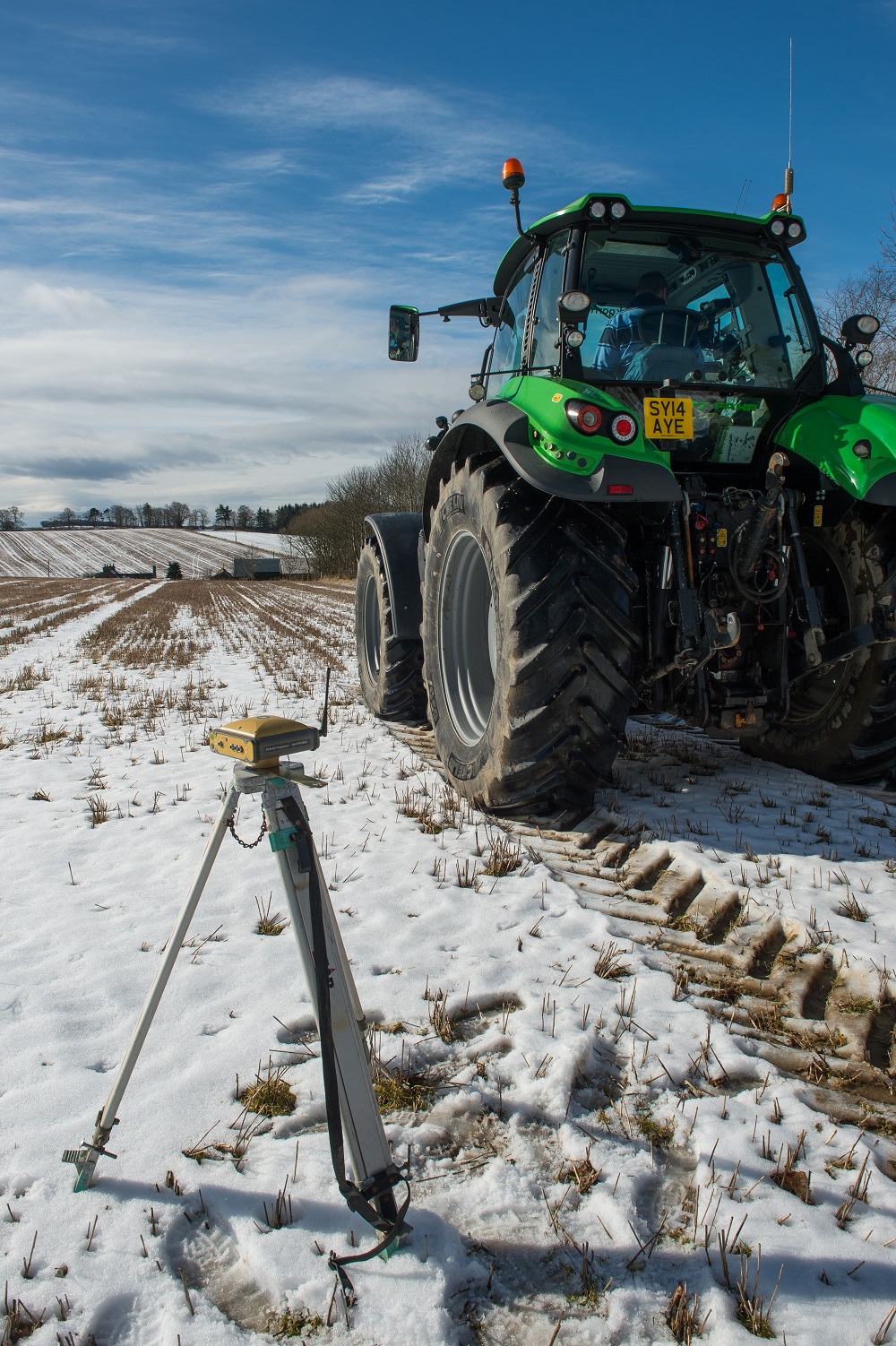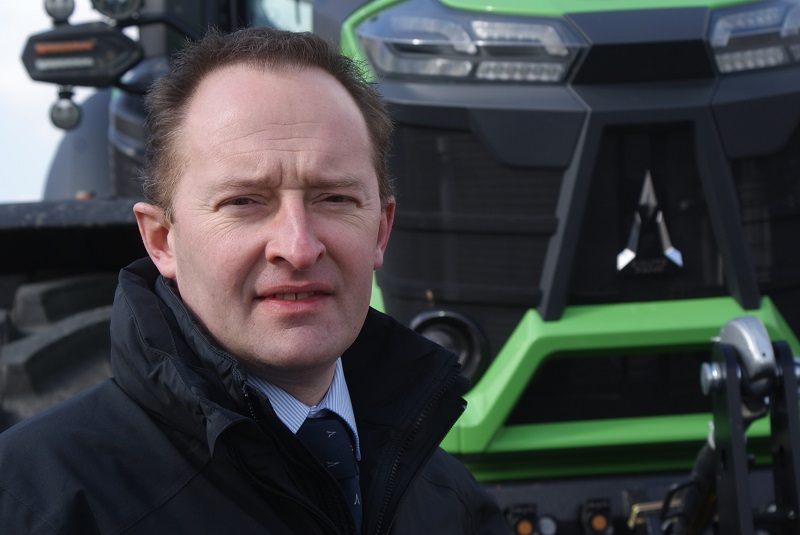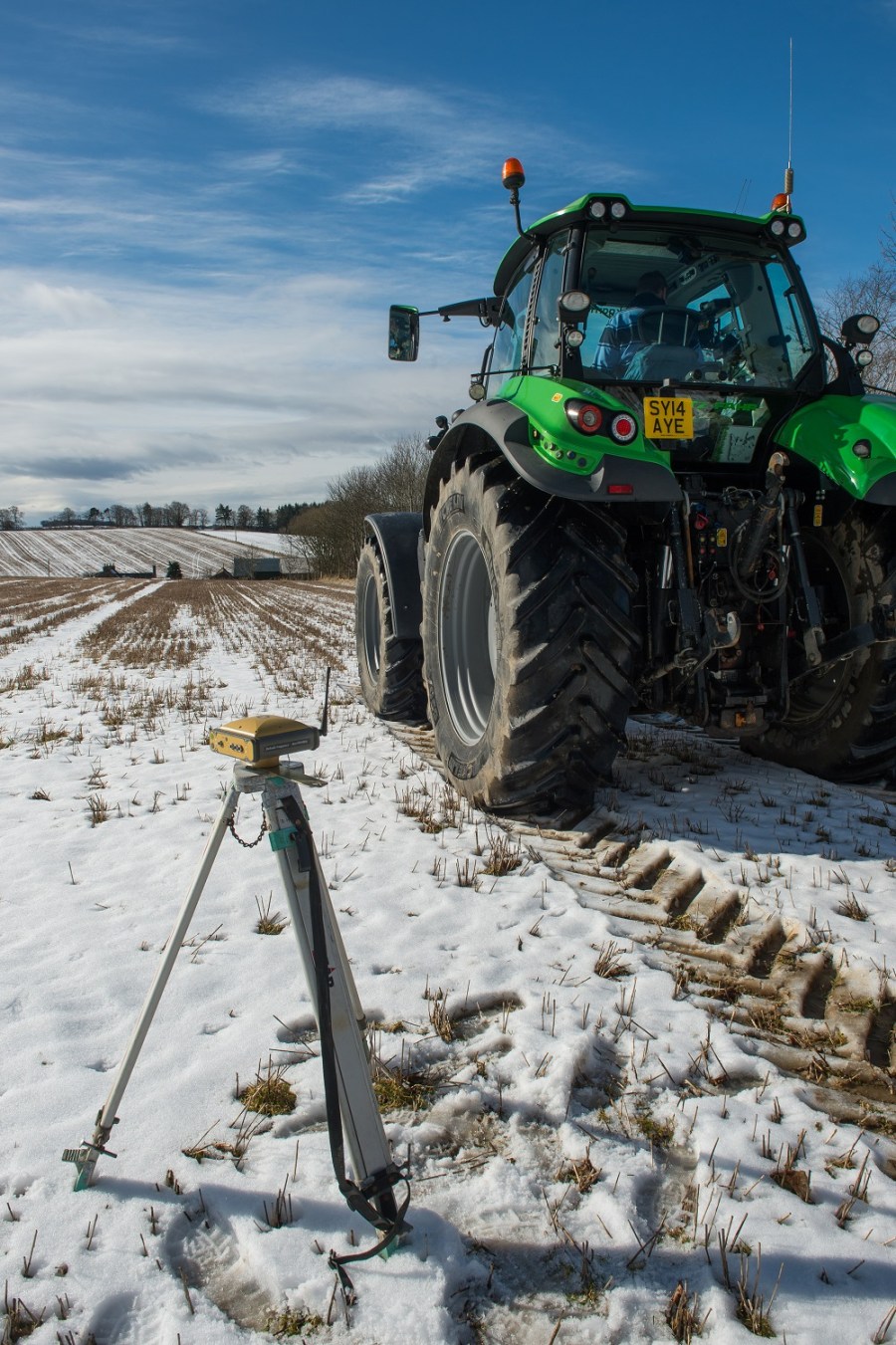A truly transf erable system between tractors that offers full operational control in the field has been something of a Holy Grail in precision farming. CPM follows the story of Agrosky, which is claimed to deliver it.
erable system between tractors that offers full operational control in the field has been something of a Holy Grail in precision farming. CPM follows the story of Agrosky, which is claimed to deliver it.
By Tom Allen-Stevens
The promise of plug-and-play technology is that you can link up any implement to the back of your tractor and operate all functions, from variable rate control to auto section shut-off, from just one console, and that’s the one that also operates all your tractor functions. The reality is rarely that straightforward, however.
When ISOBUS was launched, it was supposed to herald a new era of plug-and-play compatibility,” says Graham Barnwell, marketing manager for Deutz-Fahr UK. “What actually happened was that a number of manufacturers wanted to keep users within their own proprietary systems. But for us, compatibility is crucial.
This has been one of the leading objectives behind Agrosky. The precision farming technology was launched to UK users just two years ago, at LAMMA 2014, and is now available across the Deutz-Fahr 6, 7 and 9 Series tractors. But it’s based on some of the most widely tested and trusted technology in the sector, and this ensures compatibility with the implements of all renowned manufacturers, says the company.
It’s an extremely versatile piece of equipment.
The path to Agrosky was set in motion at Agritechnica in 2011. “Same Deutz-Fahr developed a partnership with

TopCon is a global market leader in precision farming technology, says Graham Barnwell, so it makes sense to deal with the best operator in the sector.
TopCon to supply the precision farming hardware across the SDF range,” recalls Graham Barnwell.
“TopCon is a global market leader in this technology – the company has done a huge amount of development in its hardware and software, so it makes sense that we should deal with the best operator in the sector.”
The roll-out of the system across the tractor range was held back, however. “TopCon was in the process of upgrading its receiver from the AGI 3 model to AGI 4. One of the major differences was that this would add tilt correction to the unit, keeping implements on track as you traverse a slope. There were also improvements in speed of reaction and consistency. AGI 3 was already a market-leading system, but technically AGI 4 was the one worth waiting for.”
The new receiver came on stream in 2012. The other crucial piece of hardware is the console that sits in the tractor cab and acts as the interface between operator and all the functions of both tractor and implement.
This is handled by the iMonitor2 – a 12-inch slab of touchscreen, based on TopCon’s X30 console. “The iMonitor2 has immense capacity,” notes Deutz-Fahr UK product specialist Dave Jefferson.
“It puts you in easy reach of all the tractor functions, although this is only 10% of what it can do. The lay-out is intuitive and colour-coded and everything can be tailored to the operator’s requirements. It’s also very easy to use – the X30 has a good reputation as a user-friendly device, and we’ve found operators feel completely at home with it after just 30 minutes of use.”
Stipulate preferences
The iMonitor2 provides the interface for the operator to bring up all the tractor controls, he explains. “You can assign spool valves to different buttons on the driving lever, and set them differently, depending on their function. You can set cruise control, engine speed, rate of dip of rear linkage, and these presets can be programmed in for different operators.”

Plug an implement into the nine-pin ISO 11783 socket and the iMonitor instantly recognises it and the screen is populated with essential operating information. “You can even assign a joystick control to operate a function on an implement, where usually you’d have to use a spool valve.”
This is ensured through the true ISOBUS compatibility of the system. Same Deutz-Fahr is one of the core members of the Agricultural Industry Electronics Foundation (AEF) – the body set up in 2008 to resolve compatibility problems and set up reliable tests to determine conformity to the ISOBUS standard.
There are three levels of accuracy from the basic, free EGNOS system to the subscription Omnistar and RTK (Real Time Kinematic) level. “But there’s no expensive unlocking of the equipment to do – the iMonitor2 is instantly compatible,” notes Dave Jefferson.
Auto guidance is provided through Performance Steering, if the tractor is fitted with the electronic Orbitrol unit. But Assisted Steering can be retro-fitted, replacing the steering wheel with one that’s operated through the iMonitor. “There are different levels of Agrosky available, but rarely do customers go for lower than RTK and rarely less than Performance Steering.”
All new 6 TTV, 7 and 9 Series tractors come with the iMonitor2 as standard and are complete with the Orbitrol unit. The system is optional on the 6 Series tractor, although the entire range is ISOBUS compatible.
Along with its hardware partner, Deutz-Fahr UK has also teamed up with LH-Agro to provide sales and technical support. The company has three decades of experience in precision farming and is the UK distributor for TopCon and its X30 console.
“Ten years ago it was all about satellite guidance,” says managing director Richard Reed, who set up the company in 1987. “Then it was Autosteer. The trend now is ‘what else will it do?’ People want variable rate control and more advanced applications – such as real-time scanning and applications in one single pass.”
Variants of the TopCon console are used by some of the world’s biggest machinery manufacturers. But it’s also supplied by LH-Agro as an aftermarket solution for farmers wanting to adopt precision-farming techniques. “It’s an extremely versatile piece of equipment,” says Richard Reed.
Platform kits are available for almost any make and model of tractor, he says. “It doesn’t matter whether it’s Autosteer ready or whether it requires a hydraulic valve to be installed – or even whether it’s an electric steering wheel with a motor in the hub – you can use it all the same.”
This has cost benefits to the farmer. “We’ve customers who probably have four tractors but through financial constraints can only run one system. They can fit a kit on the tractors which means they can use one receiver and one screen between all vehicles.”
It’s a colour-blind piece of kit too. “Very few farms nowadays are all green, all red or all blue – farmers have a great mixture of all makes and models of machines. They don’t want to be tied to one manufacturer. They want compatibility that enables them to mix and match.”
It isn’t always easy to quantify, but return on investment is a crucial consideration, says Richard Reed. “These are not toys for the boys or for wealthy farmers, they’re tools that can help farmers economise and make the whole operation more efficient.”
Return on investment
Individual requirements will vary, which will have a bearing on payback. Variables such as weather and soil compaction will all impact on final crop yield, so return on investment can be hard to assess exactly. Typically, though, the transition from a manual-driven cultivation system to one on full RTK will result in a save of about 15%, he suggests.
Savings in excess of 5% alone can be made by adopting single-nozzle section control and RTK on a 36m boom. “The overall return on investment can be substantial when you consider the agrochemical bill on a large farm. You can be talking about payback within 12 months.”
Advanced recording systems allow operators to analyse everything from fuel burned to input usage. “If there’s an extreme amount of overlap when you’re doing fieldwork, it’s a waste. But precision-farming eliminates all that,” says Richard Reed.
One relatively new aspect the system is set up for is Tractor Implement Management (TIM). It’s a neat configuration that works with a Krone baler, for example, and stops the tractor automatically when the right bale diameter is reached and it’s time to start binding. Height of the three-point linkage, pto control and other tractor functions can also be taken over by smart implements through the console.
“Fault diagnostics and remote assistance is handled through the iMonitor,” notes Dave Jefferson. “You can be in the middle of a field, and if you have a problem, a technician from Germany can remotely access the system, trace the fault and set it right, with minimal downtime.”
The system is relatively future-proof, notes Graham Barnwell. “One unknown is often whether a new implement will work with a console. But that’s up to the implement manufacturer to ensure the kit meets the required standard, and there’s now a register of all those that do.
“Ultimately this is heading to the driverless tractor. We’re almost there now and Agrosky is ready to help farmers manage the transition.”
Precision farming accuracy proves key in busy drilling season
The latest developments in precision farming from Deutz-Fahr’s Agrosky system are offering significant benefits for farmer and contractor David Stephen, based at Kirkton of Forglen, Turriff, Aberdeenshire.
There’s a 160ha mixed-farming enterprise on the home farm, plus 500ha of contract drilling, harvesting and silage work. It’s a busy workload, and efficiency is especially key in the spring, when most of the barley is established using a one-pass system of an Amazone combi-drill with front fertiliser hopper on ploughed land.
“It’s a short season as we often don’t start drilling until the first or second week in March, so the accuracy and ease of use offered by the guidance system saves a lot of time and is a great help,” explains David Stephen.
In 2014, a Deutz-Fahr 7250 TTV tractor with iMonitor precision farming console was purchased – the fourth Deutz to work on the farm and taking its place in the fleet alongside a Deutz 650 and three other power units.
“It’s the first time we’ve had a tractor with guidance, but everything we purchase from now on will be at least guidance-ready, as it’s where the demand is and helps the second-hand price,” he comments.
David Stephen also specified a Topcon base station giving a high precision RTK correction signal with 5-6mm accuracy, and crucially, all-day, every-day reliability.
“I’ve friends who use other satellite systems because they thought that the RTK base station was too expensive, but I can’t afford to have to wait for a signal. As long as the battery is kept charged, the RTK base station gives an instant, accurate signal whenever I want it.”
In the cab of the Deutz-Fahr 7250 TTV, the iMonitor offers colour touch-screen control of both precision farming and tractor functions.
“As well as the guidance, the screen shows all the spool valve and pto settings, and its exactly where you want it, integrated with the armrest. We still have a separate control box for the drill, but as it’s an ISOBUS terminal, if we upgrade to an ISOBUS-compatible drill in the future it could all be on the same screen.”
On the contracting side, David Stephen maps the land before he starts with a new customer, giving an accurate record of field size, so he can order precisely the right amount of seed for the following year. “There’s no wastage of fertiliser, seed or sprays as tramlines are exactly the width they’re meant to be. Seed spacing is precise and there’s no overlapping.”
He adds that the accuracy proved itself in the first season. “Having once set up the disc spacing on the drill, we didn’t need to alter it despite working on 11 different farms in all soil types from flat land to steep banks.”
Deutz-Fahr offers fully automated data management, and David Stephen reports some customer interest in job records, but sees the greatest advantage from being able to download field records and maps to the farm office pc via a memory stick for use the following year.
“I load up the map, set the A-B line and go into the field and the previous year’s map comes up on the monitor. Then I simply update the job to the current date and start work. It does take some time to map the field initially but once it’s done, setting up is so much quicker.”

Installation and set-up of the system was seamless, he reports, with support from TopCon supplier LH-Agro as well as from Deutz-Fahr dealer Mark Garrick.
“It’s very straightforward – you need to allow some time to set the drill up but then it’s so much quicker. My father isn’t technologically-minded, but in our peak season he did shifts on the drill and within a couple of fields he’d got to grips with the mapping,” he comments.




